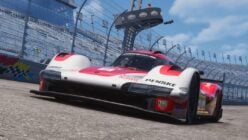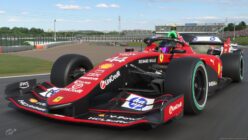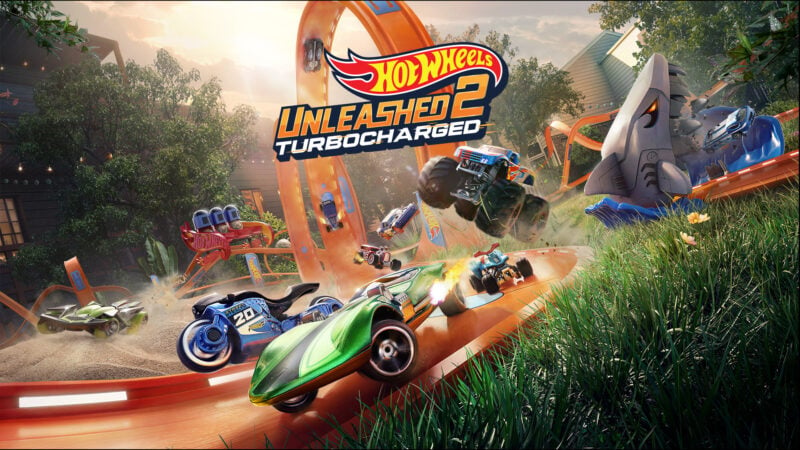
Hot Wheels Unleashed was very much the surprise of 2021. Nobody expected it to come from Milestone — well-known for its many motorbike simulators — and nobody expected it to be any good. But it was.
It certainly had its flaws, mainly in box form, but it was a cracking bit of fun that really seemed to “get” Hot Wheels.
After becoming Milestone’s best-selling game ever, and with two years elapsed, there’s a second game now available and we’ve been giving it a good workout, courtesy of a review code, on PlayStation 5.
Hot Wheels Unleashed 2: Turbocharged launches October 19 across PC, PlayStation 4/5, Xbox Series/One, and Nintendo Switch.

Content and Value For Money
Good news first: HWU2T kicks things off with twice as many cars as the first game — around 130 out of the box — and if you want them it is, for the most part, simply a matter of buying them. Yes, the blind boxes are gone.
While we do have to concede that the mechanism was kind of nice and quite similar to the “blind bag” you get in the real world, the fact is it was a lot of hoops to jump through and a good dose of random chance to get the cars you wanted, even with just 66 of them initially.
Now the cars are almost all up for sale in a shop with a regularly rotating stock list (stop me if you’ve heard that one before) or to win through a Wheelspin Hot Wheels Spin. There’ll of course be cars available only through Season Passes — 49 of them that we know of right now — but with far more cars on offer and at any time you want, it’s less egregious than the first game.
At present we’re not sure if any other vehicles will be coming through free updates, as did happen throughout the life of the first title.

A new modification system allows you to upgrade your cars into various tiers, with power-ups and benefits of different types — many of which boost one stat while diminishing another, leading to some highly tactical modifications.
There’s now six different types of vehicle, each of which has different strengths. Drift cars naturally enjoy going sideways, Rocket cars are all about straight-line speed, Swift cars (and motorbikes!) are the handling experts, and Balanced do a good job of everything. That leaves the Heavy Duty beasts and Off-Road cars (and ATVs) you’ll need for heading away from the track.
And there’s quite a bit of that too. The five new environments — sadly none of the original game’s four made the transition — feature many floor areas, including the bare dirt of the Backyard location, and they’re all busy, bustling spaces.
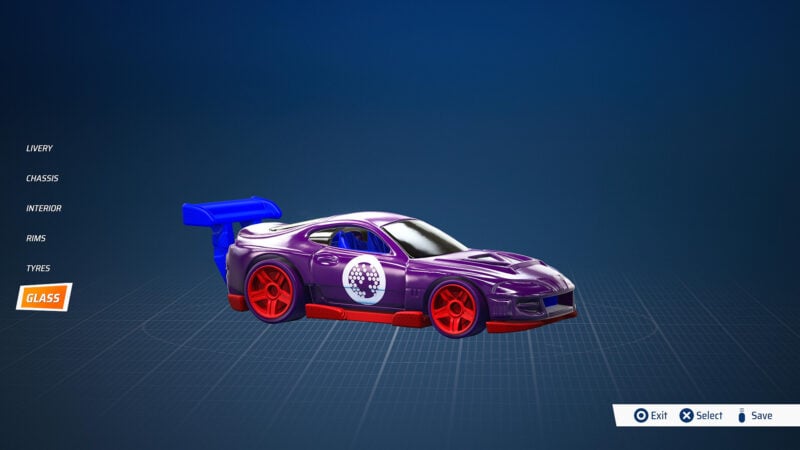
Of course the excellent livery editor returns from the first game too, and it’s hard to spot any significant changes… but then there just doesn’t need to be any.
Again, you have as much control over car colors as is really necessary — 256 colors, with configurable saturation and brightness, applied to six areas of the car (including the interior) — and you can change the material of each area between different plastic, metal, enamel, flake, and glitter finishes.
The editor contains the standard suite of stickers, including basic shapes, patterns, fonts, and emojis, but you can also create your own through assembling other stickers into unique shapes. As we saw with the first game, some impressive results are possible.
It can get a bit convoluted when it comes to using your own designs, which you have to share and upload first before downloading them again to your car, but otherwise it’s a very powerful tool.

However even that plays second fiddle to the game’s biggest asset: the Track Builder. You can, within a track budget, build anything you want from an infinite supply of orange (and not necessarily always orange) track.
Almost all of the track pieces — or “modules” — are available right from the start, with a couple of the special pieces linked to boss battles in the campaign, giving you even more freedom to make the craziest track you want. Again, you’ll be making sure your track is actually viable with a special validation tractor and can share it with the community on all platforms.
It still takes a little getting used to, but that’s the nature of a lot of creative tools in games and if you can exploit it you can come up with some excellent creations once again.

Probably the biggest single change comes in that campaign, which now reads like the pages of a comic book and takes place on a three-dimensional map rather than the old 2D item.
The story, such that it is, deals with careless scientist Professor Tanabe who accidentally releases some oversized monsters onto the unsuspecting city, and who sounds one “Good news, everyone!” away from a certain other professor.
It’s fully voiced, semi-animated, and a little hokey, but we’ll give credit for trying something different to explain why small cars are racing around giant spiders!
However it’s quite a linear campaign, particularly in the earlier stages. There’s a couple of areas where you can spur off and do something else briefly before you find yourself back on the main path. But with more than 90 races of seven different types, there’s plenty to do.
Finally we’ll give a shout out to the surprisingly in-depth photomode and the pretty decent replay feature, both of which put the recent Forza Motorsport to shame. If only more games had a time acceleration function on replays.

Online Features
With full crossplay, you shouldn’t find it difficult to participate in the online activities, although pre-launch we didn’t get much multiplayer in at all and it’s difficult to say how the experience will hold up when it’s opened fully.
There’s much more to do in the online modes this time round, with six different event types that include probably our pick for everyone’s favorite: Clash Derby. Limited to the biggest beasts in the game, this one’s just a straight smash ’em up with the last diecast standing the winner.
You’ll also find more regular racing, elimination events, waypoint and collection challenges, and even a drift competition, so it’s well served for basic, jump-in online play. There’s also a private lobby mode which you can party up for, and a local split-screen two-player mode.
User-generated tracks can also appear in online play, which is an excellent way of keeping things fresh the whole time. Or extremely irritating, but we like the challenge.
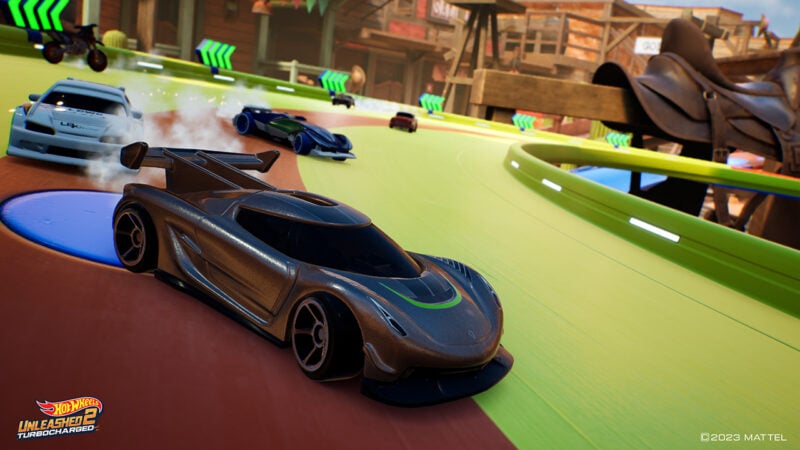
Driving Physics and Handling
As with the previous title, it’s not one to judge directly on the arcade-to-sim spectrum. The game has you driving driverless (and riderless) 1:64 scale models about a golf course; how does one mark how accurately it simulates that on a scale used for measuring how realistic real cars are?
In fact the game does an excellent job of simulating the fact that the toy cars are being flung about like toy cars. It does feel a little like it’s been backed off slightly from the first title — there’s a little more elasticity involved, particularly in the crash physics — but otherwise it does feel like wanging toy cars about.
Of course being essentially an arcade karting game there’s a lot of what you’d expect from this sort of thing. There’s boost pads and boost chargers, jump pads, sticky obstacles, magnetized track and so on — but then half of that’s in Forza Horizon 5’s Hot Wheels expansion too.
Power-sliding is a big component of the game and slightly easier to do this time round — or at least to maintain and charge up your boost.
Boost also has two additional functions now, with a jump and double-jump feature as well as the hilarious side dodge which can help you avoid obstacles or slam into the side of an opponent and send them flying to the floor if you can time it right.
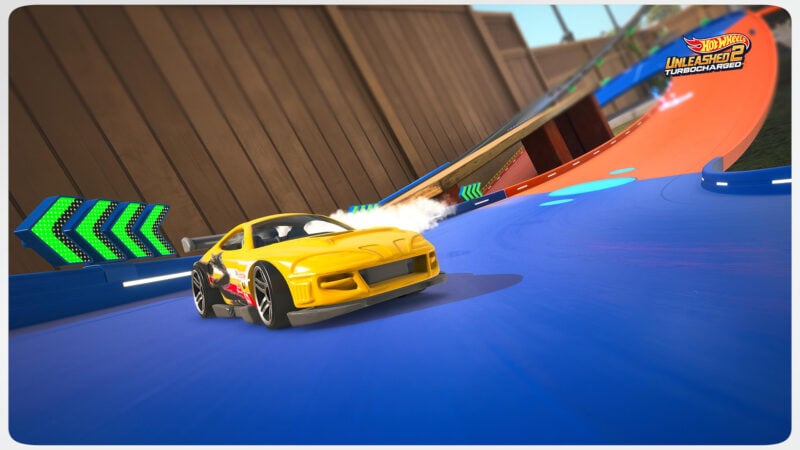
Graphics
Another case of not being broken in the original, so not really touched in the sequel. Hot Wheels Unleashed was a great-looking game on ninth-gen consoles and the second title continues to impress.
Again, in the menu screens, the cars are touchably good to look at. If you have any young children in your house, your displays will be covered in fingerprints as they reach in to grab them (or just anyway; kids, eh?). The same goes for the track which you can practically feel through the screen.
We have no complaints about how it looks in motion either, but it is slightly turned down from this pretty high bar. It’s again buttery smooth running in 4K60, at least on the PS5. We’d expect it to be the same on Xbox Series and PC, just as HWU was, though we can’t speak for the eighth-gen console version.
The game environments are again vibrant and rich, but not busy to the point of distraction. We’re also a little happy-sad to see no equivalent to the Skyscraper location from the first game; it looked truly terrifying when you leapt into nothingness, and there’s nothing quite as vertigo-inducing this time round.

Sound Design
There’s a mild uptick to the sound design in 2, but it’s more of a point of personal preference than anything.
That’s down to a couple of things. Firstly there’s a slightly more benign menu soundtrack, played at a considerably more normal volume than the first title. More importantly, the sound mix allows for better perception of a few more environmental sounds.
Again, it’s not really full of hustle and bustle — they’re miniature cars slapping round race tracks in some kind of weird Toy Story universe but for cars and plastic monsters only — and it can lead to a little bit of a lack of ambience in the visually excellent environments.
The various engine notes all sound good enough for diecast models that don’t actually have engines, and there’s enough of a difference between the screaming bikes and the V8 monster trucks — and points in-between — to make it feel authentic enough.
There’s also a little extra depth to the game with the voiced cutscenes. While they may grate a little if you’re over the age of about nine, they are at least present and do give the game more of an appeal.

The Verdict
We said about the first one that we’d not had as much fun in a racing game in some time. Since then, Forza Horizon 5, Gran Turismo 7, and Forza Motorsport have all come out and… it’s still just about there.
HWU2T again takes the simulation of how the cars look and feel like diecast toys absolutely seriously, while everything else is there for a giggle. Notably, Milestone has addressed a lot of the shortcomings of the original, while not succumbing to the temptation to muck about with the already good stuff.
Issues still exist, particularly the fact that there’s a lot more of the car list that’s paid add-ons than you’d really want to see — even if it’s been wound back considerably from the first game — and the game could do with giving out new cars a lot more freely than it does.
Otherwise, it’s a lot of fun to play, and with a decent multiplayer offering, and robust livery editor and track builder it should have a lot of replay value.
Also you can head to the shops and build up your collection in the real world at the same time as you do in the game. Try that in Gran Turismo…
Hot Wheels Unleashed 2: Turbocharged
Learn more about how our rating system works.
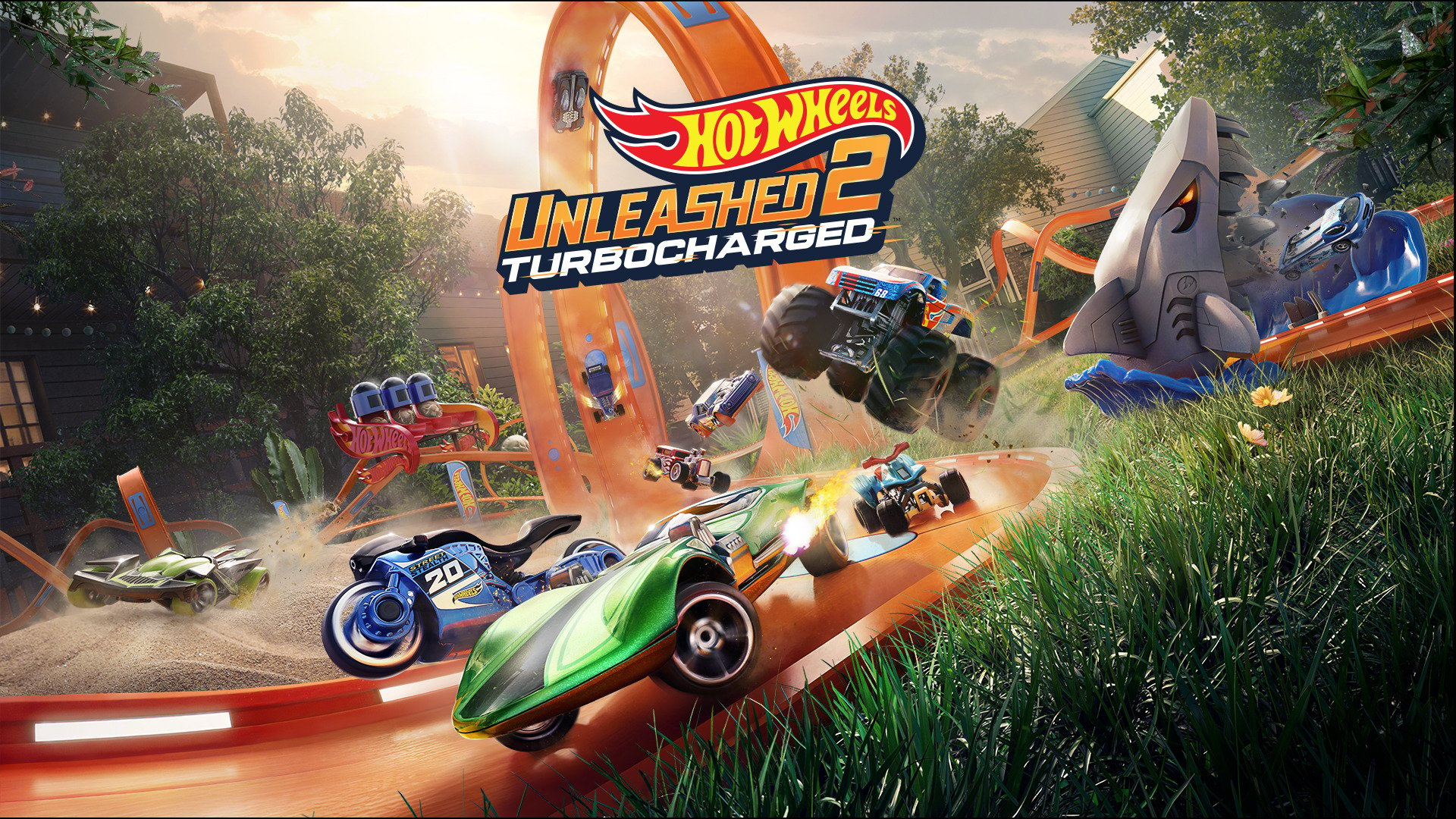
See more articles on Hot Wheels.



